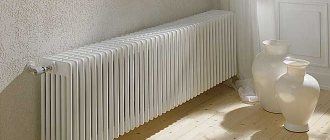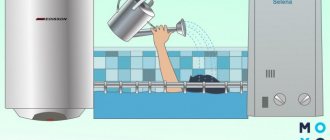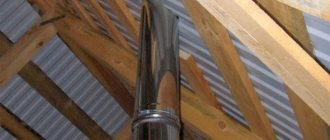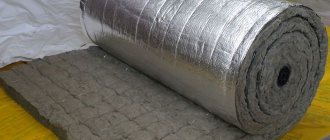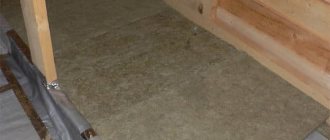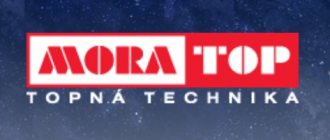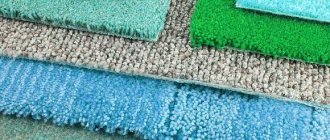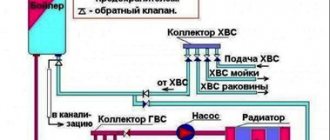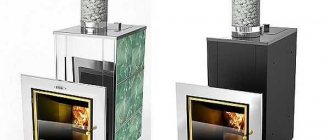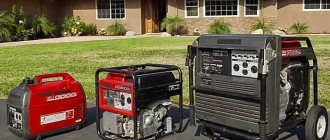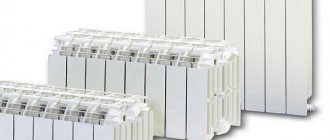When buying a moonshine still, few people think about the seemingly elementary question - on what stove, with what type of energy, gas or electricity, to distill the moonshine? By default, everyone thinks about gas, but eclectic energy is not taken into account, let's figure out whether everything is really that simple? Today, almost all modern moonshine stills are adapted to work on any type of stove: gas, electric, induction, and many stills have a flange for installing a heating element. Our Glavgradus store will help you figure it out. So where should we stop? To make the right choice, we will analyze all four methods, and we will base our choice on such important aspects as:
1. Efficiency factor (efficiency)
- characteristics of the effectiveness of each method in relation to the conversion or transfer of energy. It is determined by the ratio of usefully used energy to the total amount of energy.
2.DIstillation time
3. OPERATION SAFETY WHEN DISTILLING
4. ENERGY CONSUMES WHEN DISTILLING
We will compare standard stoves, of one power 2 kW, with which our apartments are equipped and an induction stove and heating element purchased in a store, also 2 kW. We will distill 16 - 17l. mash.
EFFICIENCY COEFFICIENT (Efficiency)
Gas stove
For a standard gas stove, the maximum burning power of the burner is 2 kW. The efficiency of such a burner is only 50 - 60%. When a burner is lit, a significant portion of the power is spent on heating the air in the kitchen, then heating the pan, and only then begins to heat the liquid in the tank, but without ceasing to waste energy on heating your kitchen.
Electric stove
For an electric stove, the maximum burner of 20 centimeters has a power of 2 kW. The efficiency of an electric stove with a glass-ceramic coating is ± 50%, the efficiency of classic electric stoves is 30 - 40%. When you turn on the electric burner, for some time all the power is spent on heating the heating element of the stove itself, then part of the power is also spent on heating the air in the kitchen, then heating the pan, and only then it begins to heat the liquid in the tank.
Electric induction cooker
Everything is much better here; the tested electric induction cooker has a maximum heating power of the burner of the same 2 kW. The efficiency of such a burner is ± 90%. When you turn on the induction cooker, an electromagnetic field is formed in the burner, which, in turn, creates eddy currents in special cookware made of ferromagnetic materials. The bottom of moonshine stills is made of ferromagnetic stainless steel AISI 430. Accordingly, all the power of the stove goes only to heating the bottom of the tank itself, and the bottom itself begins to heat the liquid in the tank. At the same time, the stove burner remains cold, and the energy of the stove is not wasted on heating the air in the kitchen.
Ten
As I said at the beginning, almost all manufacturers of modern moonshine stills produce devices with a flange for connecting a heating element. Well, or this useful option (weld a flange on the tank) can be ordered in stores selling moonshine stills.
For a comparable comparison, let’s take a heating element with a power of 2 kW. The efficiency of operation on heating elements is 99%. Everything is as good as possible here. Heating elements do not heat the air in the kitchen, they do not waste energy heating the dishes, all the energy supplied to the heating element heats it in a matter of seconds, the heating element gives off the energy immediately and all directly to the liquid in the tank.
Heater efficiency
First you need to understand what determines the efficiency of heaters.
The design of most modern heating devices is based on a tubular electric heater, a heating element. It is a curved tube made of copper or stainless steel, or a solid straight tube made of aluminum alloy. Inside there is a wire with high resistance, twisted into a spring. The heating element is densely filled with quartz sand. To provide a larger heat transfer area and increase the rate of heating of the room, tube fins are used. The heating element's spiral, unlike a conventional heating coil, which can also be used in devices, does not come into contact with air, as a result of which the effect of “oxygen burning” does not occur. And it is more reliable and secure. Heating elements of the heater
But both types of heating elements (heating elements and open spiral) have a fairly high level of efficiency - about 90-93%. The use of additional functions and technologies (glow in IR heaters, rotation of blades in fan heaters) reduces this value, since they require additional energy consumption.
In general, we can say that the level of efficiency in modern heating devices is approximately the same. The only question is the principle of operation, the tasks at hand, reliability and safety.
REFERENCE: the time it takes to reach operating temperature depends on the alcohol content of the mash
Gas stove
If the tank volume of your moonshine still is 20 liters, the power of the burner is 2 kW. when filling the tank 16 - 17 liters. mash, then to an operating temperature of 80 C° (when the first drops of moonshine are dripped in), the device will come out in ± 55 minutes, and the entire distillation process will take ± 2 hours
Electric stove
I won’t go into too much detail about the time it takes to distill mash on an electric stove. The performance is approximately the same as that of a gas stove, only slightly worse.
Electric induction cooker
Distillation time on an induction cooker is reduced due to higher efficiency. When filling the tank 16 - 17 liters. mash, the apparatus will reach an operating temperature of 80 C° in ± 40 minutes, and the entire process of distilling mash will take ± 1 hour 40 minutes.
Ten
Thanks to the highest efficiency, from 16 - 17l. mash, apparatus with heating element 2 kW. it will reach an operating temperature of 80 C° in ± 30 minutes, and the entire distillation process will take ± 1 hour 30 minutes.
How to increase the efficiency of a heater
In order to increase the efficiency of the heater, various technologies are used in production.
In oil heaters, higher efficiency can be achieved due to the larger surface of the device itself. Thus, a larger volume of air masses comes into contact with the heated body, which slightly increases the rate of heating of the room.
Operating principles of various heaters
IR heaters and fan heaters focus their work on a specific area of the room. This type of zone heating allows you to provide heat only where it is needed.
Convectors increase productivity due to the special design of the device itself and its heating element.
OPERATION SAFETY DURING DISTILLATION
This is where the biggest pros and cons start.
The technological process of moonshine distillation itself (FIRE HAZARDOUS, EXPLOSIVE)
Let's consider the following situations:
You put the moonshine still with mash on the stove, connected the water to the device for condensing the moonshine, turned on the stove at full power, the mash heated up to operating temperature and now the moonshine dripped into the jar. The distillation process is not fast, you begin to be distracted by other things. And here anything can happen: the water was turned off, the water supply hose burst, the mother-in-law walked by and accidentally pulled the hose out of the tap (by the way, the situation with the mother-in-law is real, from my experience) and what happens next. No water flows into the refrigerator of the moonshine still, condensation of the moonshine does not occur, and sharp alcohol vapors begin to whistle out of the spout instead of moonshine. They fill the kitchen, the concentration of alcohol vapor becomes critical, and your GAS is on and the flame is burning. You yourself understand what happens next.
Or such a situation, moonshine fills a jar, you wanted to measure the alcohol content of the moonshine coming out, or your wife came into the kitchen, a child ran in, a dog ran in and one awkward move and your jar of moonshine falls on the table, splashes fly around the kitchen, fall on the stove where the gas is burning, and the alcohol content of moonshine even from the simplest moonshine still is 60°, such an alcohol-containing liquid burns very well (like gasoline), you yourself understand what happens next.
Now let's return to the issue of job security. Here it essentially comes down to two questions: what type of energy, open fire or electricity, and does the burner heat up or not? During distillation, the tank of the moonshine still, due to the liquid inside, will not heat up to more than 100 C°, but the electric burner heats up to 300 C°, and if all the liquid has boiled away from the tank, it can heat up to 500 C°, which is also moderately dangerous.
Gas stove DANGER! (Open fire)
Electric stove is MODERATELY DANGEROUS! (The burner gets very hot up to 300-500 C°)
Electric induction cooker is SAFE! (Stove is cold)
TEN SAFE! (The heating element is located inside the tank with liquid)
Scientific forum dxdy
| To Prev page … , , , 9 , , , … Next. |
| Print page | Print entire topic | Prev. topic | Track. subject |
| ivanhabalin | Re: problem about the efficiency of heating devices 11.04.2013, 11:56 |
| graviton | Re: problem about the efficiency of heating devices 11.04.2013, 12:25 |
| |||||||||||||||||||||||||||||||||||||||||||||||||||||||||||||||||||
| 07/02/13 |
| ||||||||||||||||||||||||||||||||||||||||||||||||||||||||||||||||||
| 07/02/13 |
| ||||||||||||||||||||||||||||||||||||||||||||||||||||||||||||||||||
| 11/04/13 ∞ |
| ||||||||||||||||||||||||||||||||||||||||||||||||||||||||||||||||||
| |||||||||||||||||||||||||||||||||||||||||||||||||||||||||||||||||||
Fossil fuel boilers
Devices running on electricity have an efficiency of 100%.
For those using organic fuel, that is, firewood or coal, diesel fuel (fuel oil) or gas, manufacturers guarantee the following coefficients:
- conventional gas boiler - ηg=90%;
- condensing gas boiler - ηgk=96%;
- on diesel fuel - ηdt=85%;
- on solid fuel (wood) ηdr=70%; the pyrolysis boiler has a higher coefficient equal to ηdr pyr = 90%.
Comparison table for traditional electric heaters.
To purchase a heater, you need to calculate the power required to heat your home. The boiler power must compensate for the loss of heat leaving the interior. The exact calculation of these losses is quite complicated, and it is impossible to do without a specialist. However, for an approximate calculation, you can use data obtained practically.
Thus, in European countries, where construction with insulation of walls, ceilings and attics has been carried out for a long time, practice has established that 100 W of heater power per 1 m2 of room area is sufficient to compensate for losses.
To compare boilers by fuel cost, it is convenient to use the practically established hourly heat loss per 1 m3 of house volume. Let's denote it as γ (kWh). Now you can determine the amount of fuel, S, that needs to be burned within an hour. This can be done using the formula:
S=(γ×V)/(w×efficiency), (1)
where V is the volume of the building; w—specific heat capacity of combustion, kWh.
The specific heat of combustion of individual types of fuel is:
- 1 m3 of natural gas 34 MJ or 9.45 kWh;
- 1 kg of diesel fuel 42 MJ or 11.7 kWh;
- 1 liter of diesel fuel 33.6 MJ or 9.33 kWh;
- 1 kg of dry firewood 10 MJ or 2.78 kWh; In a pyrolysis boiler, the specific heat of combustion of wood is higher and equal to 4 kWh.
Heating elements (heating elements) for storage water heaters
We often hear the phrase: the heating element is the heart of an electric water heater. Why do you need a heating element or, in other words, a tubular electric heater (TEN)? Of course, to heat water. The electric current heats the heating element, passing through it, and the heating element already heats the water.
Heating elements for storage water heaters are divided into “dry” and “wet”. The difference lies in the method of heating the water: “wet” ones are immersed in water, and “dry” ones heat the water without touching it, because. are in a special capsule, which is immersed in water.
A heating element for a “wet” water heater is a tubular electric heater consisting of a copper or steel tube into which a heating coil is concentrically pressed. A special filler based on magnesium oxide (magnesium) serves as a thermal conductor and, at the same time, a dielectric between the spiral and the wall of the tube. When an electric current passes through a heating coil, due to its high ohmic resistance, almost all electrical energy is converted into heat. The heat from the spiral is transferred through the insulating backfill to the copper or stainless steel shell of the heating element, which heats the water in the water heater tank.
Heating elements have high efficiency and a long service life.
From “wet” to “dry” heating element
When heated, the heating element may have contact with water, then we are talking about a “wet” heating element, but it may not be in contact, then we are talking about a “dry” heating element.
Scale and electrolytic corrosion are the inevitable enemies of “wet” heating elements. Scale formation occurs due to excess salts and other impurities in the water, which “stick” to the heating element itself, reducing its heat transfer and complicating its operation. The heating element is forced to work harder, therefore, its service life decreases, and energy consumption increases. In addition, a new problem appears: insufficient heat removal from the surface of the heating element. In this case, the temperature of the heating element is higher than normal operating temperature. This leads to overheating and burnout of the heating element, i.e. to water heater failure.
To avoid these problems, it is enough to install a special filter to protect against scale, and also regularly clean the heating element from scale.
However, another method of combating scale is to install a “dry” heating element - such a heating element is installed in the device in a special protective capsule (tube), which is sealed and protects the heating element from contact with water. In this case, the heating element first heats the tube, and the already heated tube transfers heat to the water in the tank. Such “dry” heating elements were invented in the mid-90s in France.
If a “wet” heating element can operate without a change from 3 to 10 years, then “dry” heating elements can safely operate for up to 15 years under normal operating conditions.
“Dry” heating elements also have the advantage that the heating element can be replaced without draining the water.
Types of heating elements for water heaters
We have already found out that, depending on the type of installation and operation, heating elements can be “wet” and “dry”. However, this is not the entire classification of heating elements. So, depending on the model of the water heater, heating elements can be of different shapes, power and mounting. There are heating elements that are screwed in, mounted on a nut, as well as heating elements on a flange. The shape of the heating element directly depends on the type of boiler tank in which it is installed: there are straight, bent in various forms, spiral, combined, i.e. several heating elements in one block (on one flange). The material of the heating element is always either copper or stainless steel.
So, the main advantages of a “dry” heating element over a “wet” one are:
- Possibility of using the water heater in water supply systems with low water quality (“hard” water) since there is no contact of the heating element with water.
- Increasing the service life of the boiler as a whole, since scale does not accumulate on the heating element.
- High safety for users due to the impossibility of current breakdown or short circuit in the device tank.
Water heaters with “wet” heating elements are used in plumbing systems with “soft” water, and for “hard” water it is better to use water heaters with “dry” heating elements.
On our website you can find water heaters from famous German companies Stiebel Eltron and AEG .
Tubular electric heaters from Stiebel Eltron are deservedly renowned as the most reliable in the world. Since the founding of the company, the design of the heating element (in the figure on the right is the heating element for the psh ... si water heater) has continued to be improved. Thanks to strict quality control at all stages of production, factory defects are reduced to zero. Today, Stiebel Eltron offers the widest range of heating elements with undeniable advantages:
- copper heating elements have good heat transfer and are not subject to corrosion;
- the developed surface of the element reduces the thermal load per unit area;
- a special element in the form of a spiral and a large flange hole ensure easy dismantling, even after long-term use;
- a well-thought-out design for fastening the heating flange allows you to save time and effort when replacing or servicing;
- wide selection of electrical powers and the ability to connect 220 / 380 V.
Depending on your goals, your preferences and budget, you can easily choose the best option among AEG . All devices are equipped with high-quality thermal insulation and an internal tank that is reliably protected from corrosion. AEG water heaters have many useful features that will make the process of preparing hot water simple and convenient. Thanks to their attractive, classic design, AEG water heaters will fit perfectly into any interior.
The santehsklad online store has in stock all heating elements for water heaters from Stiebel Eltron and AEG Haustechnik, which can be ordered by calling +7 (812) 945 99 93 or by email
